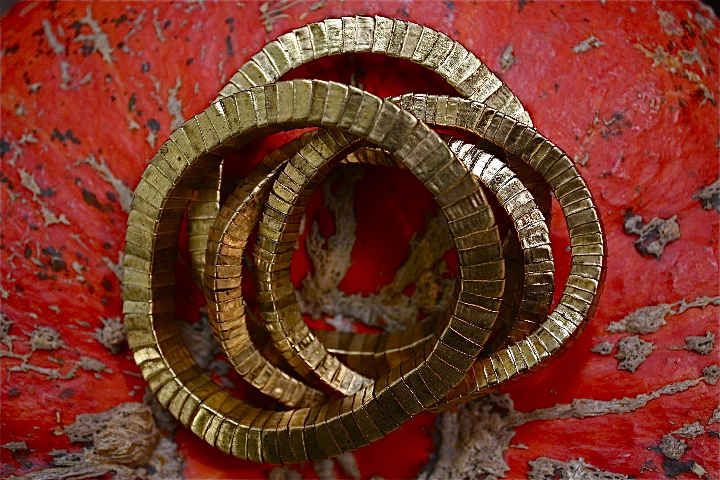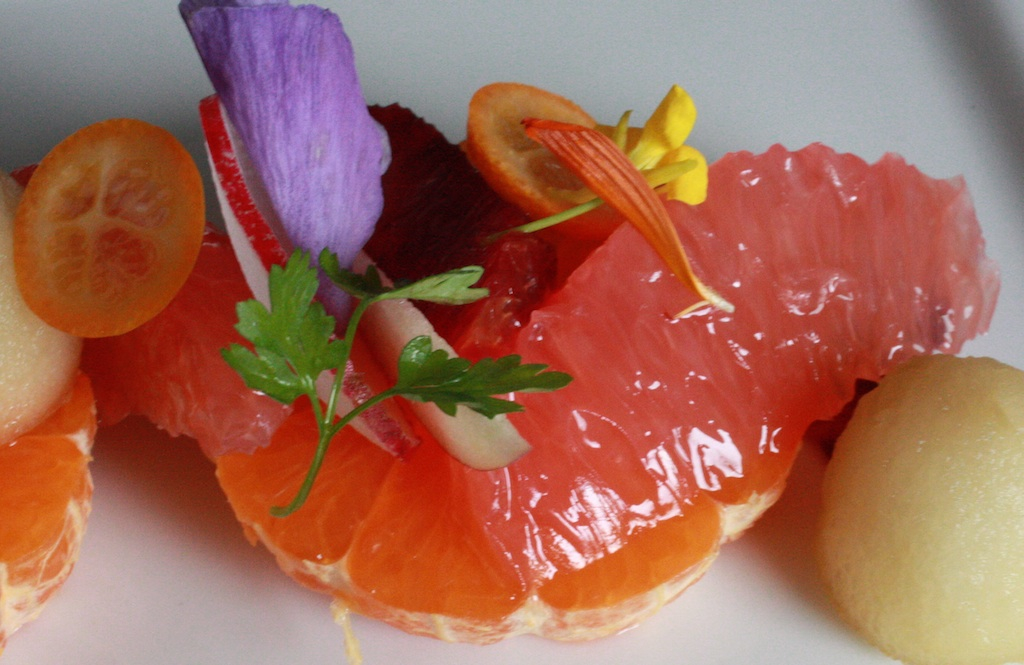Dish of the Week
A Summery Microgreen Salad
Lucknam Park, the 500 acre estate where Geoff and I spent two blissfully sybaritic days at the tail end of our recent trip to England boasts an equestrian center, a world class spa and a Michelin star restaurant led by the extremely talented chef Hywel Jones. If you’re willing to spend a bundle England has a good number of historically luxurious country house hotels ~ Downton Abbeys with mod coms ~ to choose from. (For the ultimate in posh food and wine a la campagne, Raymond Blanc’s La Manoir aux Quatre Saisons is just up the road.) What brought us to Lucknam, however, was not the desire to spend a few days pretending to be 'to the manor born'. It was the chance to explore this part of Wiltshire on horseback, along with the compelling detail that in writing about their kitchen garden on their website, Lucknam had taken the time to wax poetic about their microgreens. Here in Healdsburg we are six months into a microgreens program that may soon involve building a dedicated greenhouse. My not-so-stealth mission was to find out if that made sense, and what Lucknam had that Barndiva didn’t.
The most obvious thing, of course, is the weather. Lucknam, an hour from Bath, has mornings blanketed with dense fog, ghostly shadows of towering plane trees followed by afternoon skies the bluest of blue, mischievous clouds playing endless games of hide and seek with the sun. Plants that drink water from the air love this kind of weather. While the main buildings date back to the Doomsday Book, improvements made over the centuries by a succession of heirless owners have thankfully been more sensible than grandiose, resulting in a series of well built cottages and renovated stables that feel like they have been kitted out by someone’s rich aunt. The nicest thing about the ground floor suites is the uninterrupted views they afford across faded formal gardens, parterres with buried fountains and lush green lawns which flow unimpeded into acres of open fields dancing with cover crop grasses.
The first day and night we fell into a stupor lulled by the slow ticking of clocks, the gleam of breakfast silver, spa, swim, spa, drinks in the library, and to cap it all off, a stunning gourmandise menu that Jones sent out ~ which was excellently wine paired and simply did not put a foot wrong. The second day I spent riding, then recovering from my ride, which again seemed to involve a good many libations, more spa and yet more food. Could one get used to this life of leisure? My guess is that one could.
It was only on the third morning that I remembered my mission and headed out into the mist to meet Lucknam’s charming lady gardeners, Lou and Sarah. Though they do it as a loss leader, as we do, Lucknam has an exciting microgreen planting schedule under the talented hands of these two gals. One hopes more of their guests will begin to take notice at the table, which will allow Jones to expand the kitchen garden program. They certainly have talent and land in abundance.
It must be noted that Ryan’s admiration for microgreens has its limitations ~ while he loves the ability to step outside into the gardens, especially to harvest herbs and edible flowers that do not travel well, anything with the word ‘micro’ in it needs to justify its culinary street cred. He especially abhors using microgreens as a garnish, going so far as to call the bit of fluff one (too) often finds on top of entrées “lazy plating.” Up to a point I’m on the same page, but where he believes most varieties have inherent heat which can throw the careful flavor layering of a dish off, I’ve come to disagree.
While heat is certainly present in the cress and mustard families, many microgreen varieties make it through the exceedingly short growing time ~ which can be as swift as five days ~ with subtlety and a range of fragrances that gently hint at the flavors of the full grown plant from which they take their name. Amaranth, chards, kales and micro basils are wonderfully creamy, earthy and herbaceous by turn, without being in the least overwhelming on the palate.
Below are some Lucknam Park microgreen varieties.
The fact that I am a new convert may account for my enthusiasm ~ until a few years ago I avoided microgreens completely as I simply (and stupidly) did not realize there was a difference between them and sprouts. I do not like sprouts. Something about the idea of growing and transporting produce in water, coupled with their wan flavor, has always made me queasy. I have since learned that because sprouts are just seeds, their first leaves are always pale and inedible, their stems an afterthought. With microgreens it’s all about a lilliputian world of crunchy stems and plump flavor packed leaves redolent of curious flavors that a mindful chef like Ryan can build upon. Add to this the fact that they are beautiful, dancing on the eye as if drawn by Matisse, and you have a good enough reason to embark upon yet another build and grow project. Stay tuned.
The microgreens in Ryan’s delightful summer dinner salad are delivered daily from Mix Gardens, Daniel’s Flats, or Earlybird’s Place. This week it featured blood sorrel, purslane, watercress, bachelor buttons, yellow and red beets, shaved purple carrot and calendula. It was lightly dressed with a citrus vinaigrette and slivers of opal and green basil from the raised beds here at the barn.
Eat the View.
All text Jil Hales. All photos Jil Hales (unless otherwise noted.)








































































































